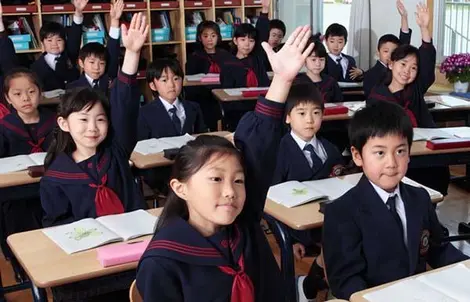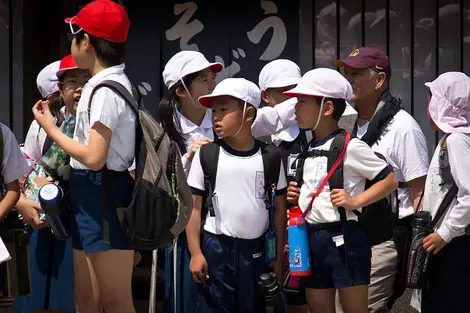The Japanese school system 日本の学校制度
At the Japanese school
Reputed to be very demanding, the Japanese school system is similar to the western curriculum in many ways, and yet very different. Japanese schoolchildren are known for their famous uniforms, but what about their school lives and curriculum?
The structure of the studies
The Japanese school system was created during the Meiji era (1868-1912). Today, education is compulsory for all children between the ages of 6 and 15. The division of the cycles is quite similar to that of the western nations: after optional kindergarten (yochien) lasting 3 years, comes primary education (shogakko), which lasts 6 years (from 6 to 12 years). Students then enter college (Chugakko) in 3 years, and finally high school (Kotogakko , often abbreviated to koko) until the year of 18, not compulsory but very followed. There are no tuition fees, however, parents will have to pay up to several thousand dollars a year (for the uniform, lunch, extracurricular activities, etc...). Wearing a uniform is compulsory in the majority of primary and secondary schools.
After completing compulsory education, young Japanese enter general, agricultural, or vocational high school. There is no system of courses in Japan, everyone follows the same subjects. What is being compared to our baccalaureate is the National College Admissions Center test, commonly referred to as the "Senta Test". It is very selective and essential to university entrance qualification for high school students who wish to pursue higher education. Once this sesame is in hand, the Japanese enter the university, public or private, or in large schools. The diplomas of the Japanese university are organized in the same way as in the west, on the Bachelor-Master-Doctorate model.

Students at the University of Tokyo
ready to go
The Japanese school year
An exception to the northern hemisphere, the Japanese school year begins in April. It is divided into three periods separated by holidays: a first from the beginning of April to mid-July, a second from September to the end of December, and a last from the beginning of January to the beginning of March. In all, the students benefit from ten weeks of vacation in the year.
- Read also: Public holidays in Japan
Japanese students have classes from Monday to Friday, generally from 8:30 am to 3:30 pm as well as two Saturdays a month. However, many students also take evening classes (gakushu juku) to improve their scores. They also take part in clubs integrated into the school and extra-curricular activities are highly encouraged (sport, music, and art). Among other things such as grammar, arithmetic, science, music, civic education, English, and home economics.
A rigorous and selective system
Due to the collective mentality of Japanese society in general, the Japanese education system tends to value competition and elitism. Discipline is very strong, as well as the notion of hierarchy and respect, especially towards the sensei (teacher). The acquisition of knowledge is mainly based on rote learning, and many exams based on MCQs punctuate the year. In primary school, children must also participate in the maintenance of the school after lessons. Each student, with encouragement from their families, lings to enter the best universities, the best high school, public or private, and finally obtain the best results at Senta to become accepted at a renowned university.
Thus, the vast majority of students work hard and attend evening classes to improve. Things are changing and students can immerse themselves in a complete college experience. However, the tuition is expensive, ranging from $10,000 to 30,000 plus a year for education at reputable universities.
Finally, after a highly systemized job search process known as shukatsu, most young graduates find a job as soon as they finish their studies.














